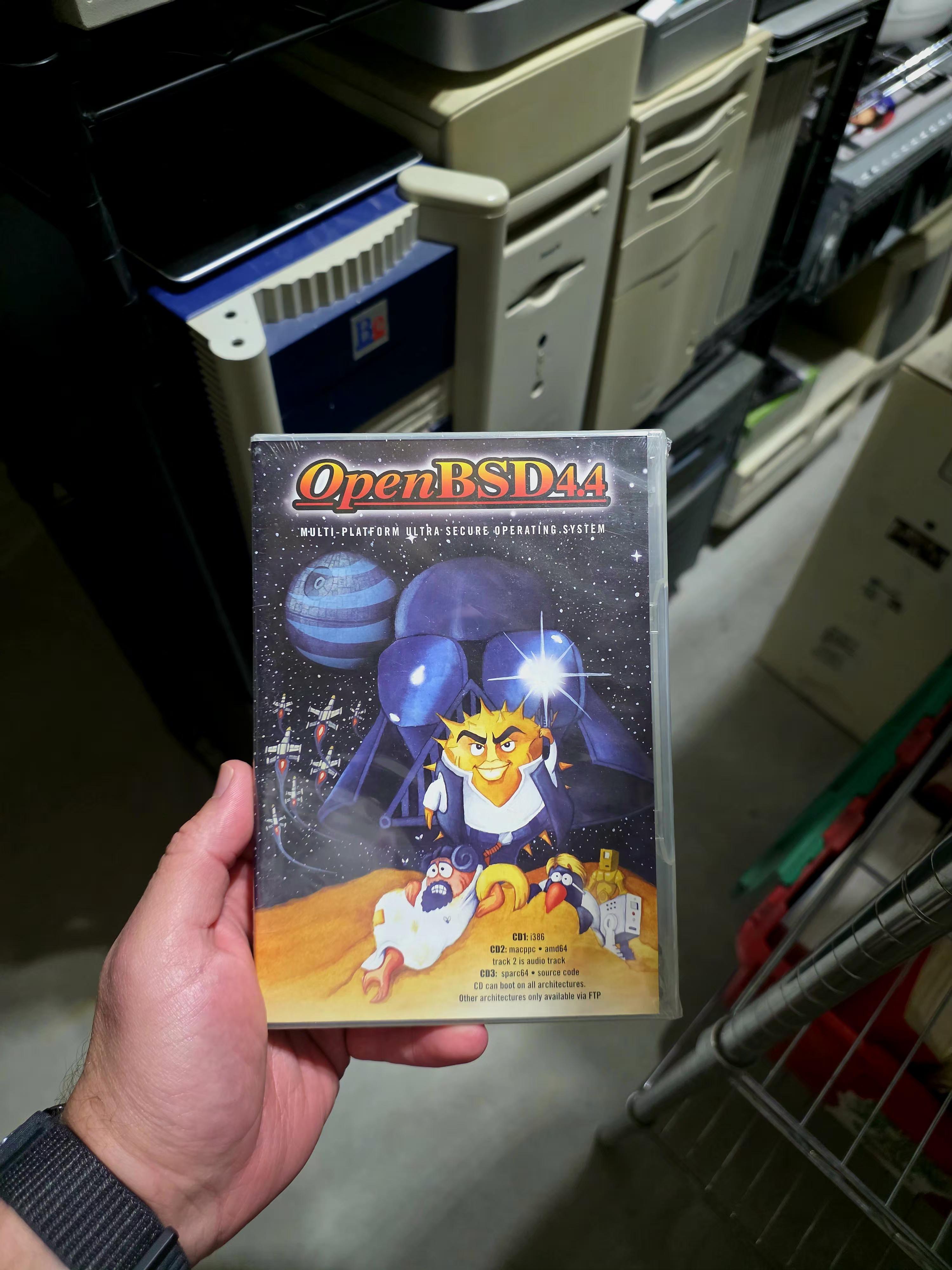OpenBSD and Me
OpenBSD holds a place near and dear to my heart. Back in the Air Force, I deployed some of the first Snort sensors in 2003/2004 to detect network traffic. I quickly became engrossed with the elegance and simplicity of OpenBSD’s build system and ongoing maintenance.
I wish I could dig back through my early eBay purchases and find the little Compaq machine that powered my first home server install. In my dorm room, I built my first PF firewall and router to practice network configurations. After spending all day working on Sidewinder firewalls and Cisco gear, I was blown away by what I could accomplish with a $200 computer and some persistence.
Even now, with every new release, I still spin up a VM to see what’s changed and improved. The most recent ones made me nostalgic for that “Airman Schmidt hacking spirit.” Around the same time, I needed to migrate a VPS. Dreamhost and Digital Ocean had served me well, but I wanted to support Open Source developers and communities more directly. Cory Doctorow’s “Enshittification” argument left an impression on me - I no longer believe in the intrinsic “free web” I grew up with on BBS boards. It’s time to put my money where my mouth is.
And for me, that also means financially supporting OpenBSD itself. I regularly buy OpenBSD releases and swag, and I contribute to the OpenBSD Foundation to help sustain the project and ensure development continues.

Why OpenBSD Amsterdam?
OpenBSD Amsterdam offers a fantastic setup. With OpenBSD’s built-in hypervisor (vmd), it’s finally straightforward to give hackers easy-to-use VPS instances with full control. Sure, Linux, Solaris, and FreeBSD have their own solutions, but I find vmd/vmm refreshingly simple to use and operate.
I signed up for an OpenBSD Amsterdam VM to tackle a few personal use cases:
Migrating off Jekyll to Hugo
Jekyll has served me well, but Ruby has become a bit painful to maintain in CI pipelines for someone with limited free time. I’ve been intrigued by Go for a while, and migrating to Hugo gave me both a simpler setup and a chance to finally learn the language.Exploring RelayD
RelayD is an absolute joy. I’ve used Nginx and Caddy for years, but OpenBSD ships with powerful tools like RelayD, TLS, and Acme right in the base system. I wanted to explore how these pieces work together without relying on external stacks.Overcoming rural internet challenges
Living out in the boonies, my internet options are limited. I juggle two 5G hotspots to keep my WFH setup online. Even with Tailscale/WireGuard, CGNAT causes headaches. Rather than rely on third-party hosted solutions, I wanted to build my own approach with OpenBSD.Standing up Matrix and bridges
One of my passions has always been communication systems, and I’ve missed the golden age of multi-network chat. Back in the day, I spent countless hours idling on IRC and loved the flexibility of clients like Trillian, Gaim, Pidgin, and later Weechat - when the world couldn’t agree on a single de facto service. XMPP felt like our last real hope for unifying protocols, but today we’re left with a splattering of disconnected chat networks.With Matrix and its bridging capabilities, I finally have a way to recreate that old “multi-network hub” experience under my own control. Hosting my own Matrix server on OpenBSD lets me tie together disparate networks, reclaim some of the spirit of the early chat era, and ensure I’m not beholden to yet another siloed service.
Self-hosting RSS and bookmarking
RSS has always been one of the most powerful yet underappreciated tools on the web. For years I leaned on services like Pocket to manage my reading list, but after Mozilla goobered it up, I decided it was time to reclaim control. By self-hosting Miniflux for RSS feeds and Shiori for bookmarks, I can keep my reading workflow fast, minimal, and entirely under my own control. This setup not only restores the clean simplicity I loved about RSS, but also ensures I’m no longer dependent on the whims of yet another “enshittified” service.
What’s Next
As part of this OpenBSD VPS adventure, I’ll also be documenting my experience running OpenBSD on a ThinkPad X1 Carbon Gen 9 as a daily desktop. I want to see how accessible and practical it is as a workstation today compared to the last time I attempted this.
A big part of that journey will be exploring hardware support: how well Wi-Fi performs, whether suspend/resume is reliable, how graphics behave under OpenBSD, and whether the machine feels like a comfortable workstation for real-world use. These are the details that often determine whether OpenBSD is viable as a daily driver - and I’ll be digging into each of them.
Over the next few weeks and months, I’ll document how I set up my OpenBSD VPS, my desktop experiments, and how I’m using them to provide services. It feels good to bring that old Airman tinkering spirit back online.